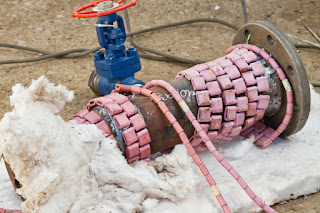Welders rely on ceramic pad heaters, also known as ceramic mat heaters, to maintain and control temperature during welding. They place these flexible mats on or around the weld zone to either slow cooling or provide consistent heat for stress relief. By applying steady, localized warmth, ceramic pad heaters help prevent cracking, warping, and other common defects when the material cools too rapidly or remains unevenly heated.
Early ceramic pad heaters had a rigid design, which made them more prone to breakage and less adaptable to complex shapes. Manufacturers then adopted interlocking ceramic beads and flexible high-temperature fabrics to create mats that bend and wrap around pipes, flat panels, and other irregular surfaces without losing functionality. This improvement boosted their durability and expanded their usefulness in applications that require preheating, post-weld heat treatment (PWHT), or ongoing temperature maintenance.
Modern versions incorporate more robust materials and advanced electrical connections. Engineers added high-temperature lead wires, better insulation, and stronger ceramic beads to withstand the intense heat cycles and demanding conditions in industrial environments. Fabricators gain an advantage by pairing these heaters with specialized temperature controllers, which enable precise regulation of heat input and ensure uniform distribution across the welded area. Through these design enhancements, ceramic pad heaters have become an indispensable tool that promotes weld quality, reduces rework, and lengthens the lifespan of critical metal components.
2960 East State Street Ext.
Hamilton, NJ 08619
Phone # 609.588.0900
Fax # 609.588.8333
www.hotfoilehs.com













